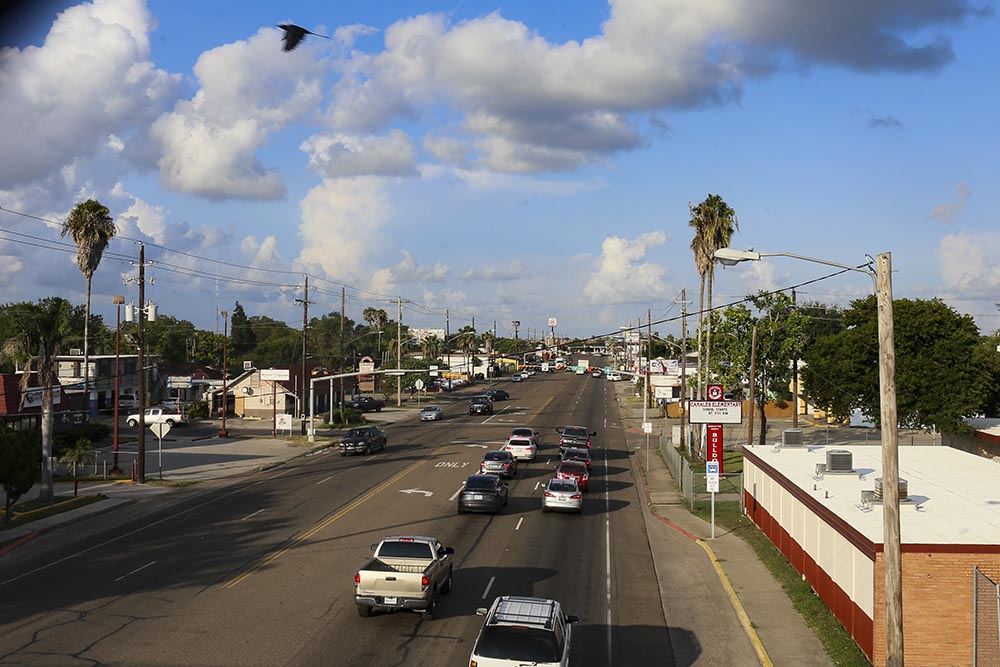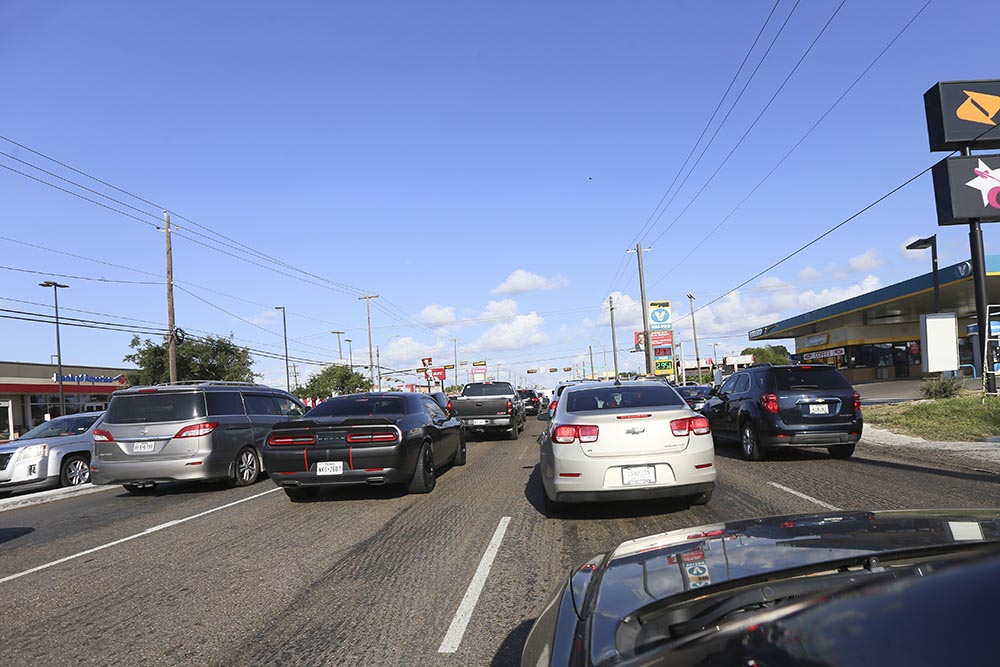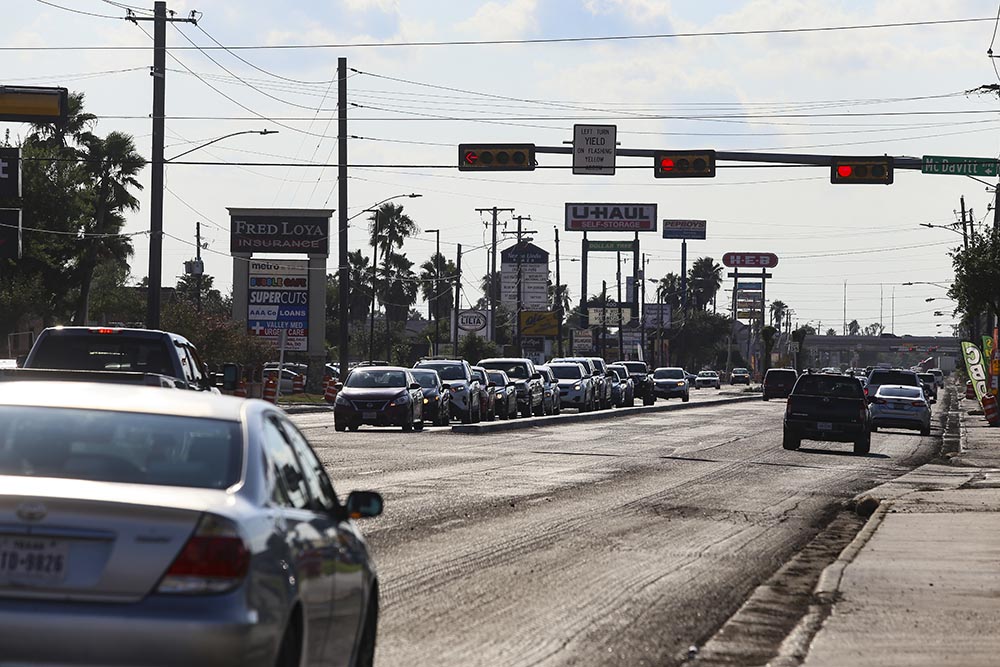Out-of-sync traffic lights have had Brownsville motorists seeing red for years, but it’s about to change.
When Armando Gutierrez Jr. came to Brownsville from Port Arthur not quite two years ago as the new director of the city’s engineering and public works department, it didn’t take him long to notice the problem.
“The very poor synchronization is frustrating for people trying to get across town,” he said. “You catch all these lights and they don’t seem to be synchronized in any way that would make it easy for traffic to flow.”
Now the city and the department are doing something about it. City Manager Noel Bernal has made a priority of updating outmoded traffic-control infrastructure and funds have been allocated for the purpose, Gutierrez said, noting that about $1 million was spent in fiscal year 2021, which ends Sept. 30. Another $1.4 million has been programmed for fiscal year 2022.
About $300,000 of the money spent this year went for installing traffic detectors at key intersections. The detectors keep track of the volume, direction and turning habits of traffic at all points throughout the day.
“You need all that data, and the only way to acquire the data is to either have somebody out there with a tablet taking notes, or installing traffic detectors,” Gutierrez said.
The department hired a local engineering firm to collect the data and use it to create computer models to determine optimal traffic-light programming for maximum flow. Traffic volume and direction varies with the time of day, so you need a system capable of adjusting the timing when necessary. The control boxes that tell the lights what to do and when also have to be upgraded, Gutierrez said. Wifi antennas have already been installed at some intersections to enable them to “talk to each other” in real time, he said.
“That’s how synchronization works: All the traffic lights along the road are talking to each other so that they can … turn green at the right time so that traffic can just flow through without being stopped,” Gutierrez said.

The old system relies on simple timers incapable of automatically adjusting for fluctuating traffic, he said, noting that the upcoming fiscal year’s work will mainly involve upgrading control box equipment, he said.
The four stretches of road being upgraded now are Alton Gloor Boulevard from I-69E to Paredes Line Road, Central Boulevard from West Elizabeth Street to Ruben Torres Boulevard, Boca Chica Boulevard from I-69E to Four Corners, and International Boulevard from I-69E to Four Corners.
“Once the proper timing sequences are determined they’ll be uploaded to every one of the control panels,” Gutierrez said. “We’re in the last couple of weeks of programming. I would say in the next two or three weeks we’re going to start uploading all the programming to those particular intersections. Once we start uploading all that programming, then that’s when you’ll notice a difference.”
S.H. 48/South Padre Island Highway is also on the list, he said. The Texas Department of Transportation is installing new traffic lights along a portion of the road and is in the process of acquiring additional right-of-way, Gutierrez said. Those lights will be programmed as well and once the work is done motorists will notice a “big improvement,” he said.
Long term the goal is to sync the whole city, starting with the major thoroughfares first and then tackling the less busy side streets, Gutierrez said. He said it will probably take at least $1 million a year over the next several years to finish the job and then it becomes a matter of maintenance.

Drivers who encounter frequent red lights tend to take more chances, so a synchronized system is important from a safety standpoint as well as being more convenient and better for commerce and air quality, Gutierrez said.
“Traffic lights can really frustrate drivers, and they become more aggressive,” he said. “People trying to pass on the right and trying to pass on the shoulder and trying to make shortcuts through private property. I’ve seen that many times at a corner.”
Synchronization is underway because city administration is prioritizing it, though it would have been hard to solve in years past whether previous administrations prioritized it or not since the technology didn’t always exist, and if it did the city didn’t have it, he said.
“What happened is that the infrastructure was antique,” Gutierrez said. “Even if we wanted to do some improvements, even if we wanted to synchronize them, if the equipment is not there you can’t do it. As the city continues to grow, in essence we’ve just fallen behind because we can’t make the improvements that are needed to accommodate the traffic flow.”
Or couldn’t at any rate. Gutierrez said he’s looking forward to a future when traffic flows so well in Brownsville that drivers stop noticing.
“The number of complaints is going to go down,” he said. “It’s going to be wonderful.”




